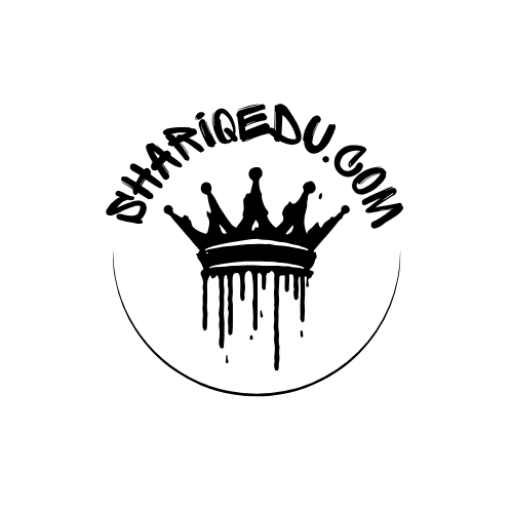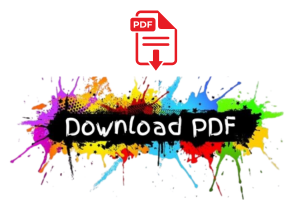Table of Contents
Toggle🅰️ The Magic of the Alphabet:
🌟Building the Foundation of Reading
Learning the alphabet is the first step toward unlocking the world of reading and writing. Each letter carries its own unique sound and shape, helping children connect spoken words to written symbols. Through fun songs, colorful visuals, and playful activities, kids begin to recognize letters and their sounds turning learning into an exciting adventure.
🌈 The Alphabet: The First Step to Reading Success
The alphabet is the foundation of language and literacy. Learning letters is the first exciting step every child takes on their reading journey. Each letter has its own sound, shape, and story — and together, they build every word we speak, read, and write.
Introducing the alphabet early helps children recognize patterns, improve memory, and develop strong communication skills. When kids sing the ABC song, trace letters, or play letter games, they’re not just having fun — they’re building powerful connections in their brains that prepare them for reading and writing success.
The best way to teach the alphabet is through play and creativity! Use colorful flashcards, alphabet songs, storybooks, and hands-on activities. Encourage your child to find letters in everyday life — on signs, cereal boxes, and books. These small, joyful moments turn learning into a natural part of their world.



🎨 The Alphabet: Our ABC Adventure
The alphabet is all the letters we use to write and read words. In English there are 26 letters (A, B, C … all the way to Z)kids.britannica.com. You can think of letters like puzzle pieces or Lego blocks – each one has a shape and a sound. When we put letters together, they make words and stories! Learning letters (letter names and shapes) is called alphabet knowledgereadingrockets.org. Even very young children begin to notice letters on signs, books, or toy labels. For example, kids might learn that A is the first letter and makes the sound /a/, while B is second and makes the sound /b/. As children hear letter names and sounds everywhere, they start to understand that letters are symbols for the sounds in spoken wordsreadingrockets.org. This special insight – that letters link to sounds – is the key to learning how to read.
Learning the alphabet is a big first step toward reading and writing. Experts note that “letters form the foundation of words, language, and the skills needed to read and write”weareteachers.com. In fact, research shows that knowing the ABCs is one of the best predictors of later reading successreadingrockets.orgpmc.ncbi.nlm.nih.gov. Children who can name most letters and know many letter-sounds by kindergarten usually learn to read and spell more easily. Conversely, young children who enter school without solid letter knowledge often struggle with reading and fall behind their peerspmc.ncbi.nlm.nih.govreadingrockets.org. This is why preschool and kindergarten teachers work hard to teach letters: mastering the alphabet lays the groundwork for all future reading and writingreadingrockets.orgweareteachers.com.
Why Learning Letters is Important
Knowing the alphabet helps kids unlock the code of written language. Each letter stands for one or more sounds, so recognizing letters is like having a secret key to figure out words. Teachers say that when children see a letter and immediately remember its name and sound, they are building their reading brainreadingrockets.orgreadingrockets.org. For example, by looking at the letters as they say them, children develop a mental picture that links each shape with its namereadingrockets.org. This letter-picture in their mind will help them read words faster later on.
Letter knowledge is also a stepping stone to phonics – the skill of matching letters with sounds. Reading research shows that young children’s knowledge of letter names and sounds predicts how well they will read and spell in the futurepmc.ncbi.nlm.nih.gov. In other words, practice with letters in the preschool years pays off: kids who know their letters tend to become fluent readers. Because of this, many curricula expect preschoolers to start identifying letters and kindergartners to know all 26 names and most of the sounds before moving onpmc.ncbi.nlm.nih.govreadingrockets.org.
Tips for Teachers and Parents
Helping children learn letters should be playful and hands-on. Little learners make big strides when they get to touch, play, and move while learningtreehouseschoolhouse.comreadingrockets.org. Here are some friendly tips teachers (and parents) can use:
Follow children’s interests: Use letters that mean something to the child. Kids get excited about the first letter of their name, favorite toy, or petpre-kpages.com. For example, a child named Mia will likely be interested in the letter M. Start by playing with that letter, then introduce the other letters in her name, and later letters of family and friendspre-kpages.com.
Multi-sensory activities: Let children see and feel letters in many ways. For example, have them trace letters in sand or shaving cream with their fingerreadingrockets.orgweareteachers.com. Use playdough or clay to shape letters, or bend pipe cleaners and straws into letter shapesweareteachers.com. When kids touch and build letters themselves, they learn the shapes more quicklyreadingrockets.orgweareteachers.com.
Point and say: When teaching a letter, point at it as you say its name. For instance, sing the alphabet song while pointing to each letter on a chart or flashcardreadingrockets.org. This ensures children look at the letter shape while they hear its namereadingrockets.org. Repeating this over time (singing A-B-C daily and pointing at letters) helps children link each name to the shape.
Play letter games: Games make learning fun. Hide plastic or cardboard letters in a sensory bin (filled with rice, sand, or shredded paper) and have children find themweareteachers.com. Turn it into a scavenger hunt by hiding sticky-note letters around the room for kids to discoverweareteachers.com. When a child finds a letter, ask them to name it and say its sound (or a word that starts with it) to reinforce learning.
Match uppercase and lowercase: Use puzzles or matching games so children pair the big and small versions of each letter. For example, write uppercase letters on dried beans or blocks and lowercase letters on beads or cards. Have kids find and match the pairsweareteachers.comweareteachers.com. This helps them see that “A” and “a” are the same letter. You can also line up kids holding cards and call out letters, having them stand in ABC orderweareteachers.com.
Use everyday print: Point out letters wherever you see them. Read alphabet books together and ask the child to point at a letter they hear. Look for letters on cereal boxes, signs, and clothing. Even environmental print (the words on familiar labels) can help reinforce letters, as it ties learning to the real world.
Sing and rhyme: Songs and chants stick in memory. Sing the ABC song regularly, and let children move or dance along. There are also many fun alphabet songs and rhymes (for example, songs that focus on a single letter sound) that teachers can use. The rhythm and music help kids remember the sequence of letters.
Practice often: Repetition is key. Quickly reviewing letters each day (through a song, a quick game, or flashcards) helps children remember. Even a few minutes each day of letter practice can make a big difference. As one teacher notes, looking at letters and saying them repeatedly “teaches to mastery” so the connection becomes automaticreadingrockets.org.
Alphabet Activities: Songs, Games & Crafts
Here are some fun activity ideas that combine learning and play. You can mix and match these in class or at home to keep letter practice exciting:
Alphabet Song Sing-Along: Gather children in a circle and sing the traditional ABC song. Encourage kids to point to letters on a chart or on foam mats as they sing. Music helps them remember the order of letters. (Adaptation: Play a game of musical letters – put letter cards in a circle on the floor and have kids walk around; when the music stops, the child by a letter names itweareteachers.com.)
Letter Hide-and-Seek: Fill a sensory bin with sand, rice, or dried corn kernels and hide plastic alphabet letters insideweareteachers.com. Let each child pull out a handful of letters, then name and sound out each one. You can also do a sticky-note scavenger hunt – hide paper letters around the room and let kids find and post them on an “alphabet board”weareteachers.com.
Art and Crafts: Turn letter practice into an art project. Have children paint or color letters. For example, write a big letter on paper and let kids dot-paint it using cotton swabs dipped in paintweareteachers.com. Another idea: cover a table with shaving cream and have children draw letters in it with their fingersweareteachers.com. They can also make letters using natural objects (glue twigs, leaves, and stones into letter shapes)weareteachers.com.
Playdough and Pipe Cleaners: Give each child some playdough or pipe cleaners and call out a letter. Have the child form that letter shape with the materialweareteachers.com. This builds fine motor skills and helps them remember the letter’s shape. You can keep it simple (call out letters) or a turn-taking game (pass a playdough ball and make letters in turns).
Matching Games: Create cards or use letter magnets to play matching games. For example, spread uppercase letters on a board and give each child lowercase letter cards. Ask them to match pairs. Or play a memory game: flip cards face down and find matching letter pairs. You can also play “alphabet bingo” or toss beanbags onto letter targets.
Name Puzzles: Write each child’s name on a strip of paper or cardboard and cut it into letter-shaped piecesweareteachers.com. Have the child reassemble the letters to spell their name. This personalizes the activity and reinforces letters they see often. Swap puzzles with friends so they practice other names too.
Alphabet Soup (Pretend Cooking): Fill bowls with plastic letters or alphabet pasta. Give each child a spoon or ladle and have them “serve up” letters. Call out names of letters or simple words, and kids dig through their bowl to find the needed lettersweareteachers.com. It’s a fun way to “eat” the alphabet and practice letter names.
Outdoor Fun: Use sidewalk chalk to draw giant letters on the pavement. Kids can trace the outlines with their feet or a paintbrush dipped in waterweareteachers.com. You could also cut sponges into letter shapes and let children stamp them on paper or use them in the water tableweareteachers.com.
Make an ABC Book: Work together to create a simple alphabet book. Use 26 sheets of paper stapled together or bound with yarn. On each page, draw a big uppercase and lowercase letter and glue a picture or sticker of something that starts with that letter (A for apple, B for ball, etc.)weareteachers.com. Personalizing it (using things in your classroom or child’s life) makes it more meaningful.
All these activities turn letter learning into play, which keeps children engaged. Remember to celebrate each small success – learning letters is a big achievement for little learners!
By introducing the alphabet with fun songs, games, and crafts, teachers and parents can make the ABCs exciting rather than stressful. As kids sing the alphabet song and spot letters in their play, they are building the skills they need to start reading. With plenty of practice and encouragement, children will soon know their ABCs – opening the door to a world of words and stories ahead.
Sources: Alphabet basics and teaching strategies are drawn from early literacy research and expert educatorsreadingrockets.orgpmc.ncbi.nlm.nih.govreadingrockets.orgweareteachers.compre-kpages.comreadingrockets.org. The activity ideas are adapted from teacher resources and early learning blogsweareteachers.comweareteachers.comweareteachers.com, which recommend hands-on, playful methods to help young children learn letters.






